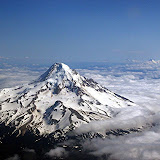Environmentally Friendly Airplanes are Better than Cars!
Small aircraft can be greener, more eco-friendly and sustainable than cars! Here’s the argument for the case.
Just out of curiosity, why don’t more environmentalists support flying? Especially flying small general aviation planes. Think about it. A four seat aircraft weighs less than a four seat car and less materials are used. An aircraft going from point A to B will get there faster, therefore the engine and systems run for less time than a car over the same distance. While we are on point A and B, a car travels a squiggly circuitous route to get from A to B while a plane can fly relatively straight, so the plane travels less distance to get there. Airplanes travel in three dimensions while a car travels in two, so aircraft can distribute congestion over altitude. Let’s compare fuel consumption over the trip and see how that works out. We’ll compare and contrast a car and a plane over two distances, 100 miles and 1000 miles.
Plane:
Miles traveled : 100 1000
Speed: 120mph 120mph
Time traveled: 50min (.833h) 8h30min (8.5h)
Fuel consumption @ 6gph: 5gal 50 gal
Car:
Miles traveled : 100 1000
Speed: 65mph 65mph
Time traveled: 1h32min (1.53h) 15h20min (15.38h)
Fuel consumption @ 20mpg: 5gal 50 gal
As you can see, the fuel consumption is the same yet the time traveled is much less for the aircraft. There are other benefits too; including wear and tear on the two vehicles, which will be less for the aircraft over the same distance. There is just less friction in play to wear down the aircraft than there is friction wearing down the ground vehicle.
Now the naysayers can quibble over all this. Some will say the fuel consumption is off, and will create a scenario to prove that. Others will say the cost of production is off, or there are fewer landing places which is true, but this is more a factor of aircraft design and zoning rather than anything else. Yet any argument the naysayers construct will be dwarfed by the one, elephant-sized issue, always overlooked, which is in the favor of the aircraft; the car needs 1,000 miles of highway built and maintained while the airplane needs only 1 mile for the same 1,000 mile flight, with a half mile for take-off and a half mile for the landing.
Let’s just say, conservatively, that it costs $10,000 dollars per mile of runway or finished highway. So our mile of runway costs $10,000 while the highway would cost $10,000,000. And this does not even include the environmental destruction which occurs with those extra 999 miles of highway!
So why aren’t more people flying and saving time and the environment? That’s a good question! In today’s environment; costs, legal, cultural and bureaucratic blocks, thwart progress and growth, but the good news is none of these are insurmountable.
If you love aviation and you care about the environment, we ought to start advancing discussion on this and similar arguments. It is possible, with design enhancements within existing technology to make aircraft more flexible for use. Zoning changes can make airports more practical to build and maintain. Improved aircraft design using known technology and design can improve aircraft performance for airport operations. Training changes can make pilot proficiency better, marketing can increase the value of general aviation in the public eye and political strength can help fight for better utilization of general aviation. If you are interested, you can help start the dialog needed to begin making the changes.
onwards and upwards!
Rob Bremmer








